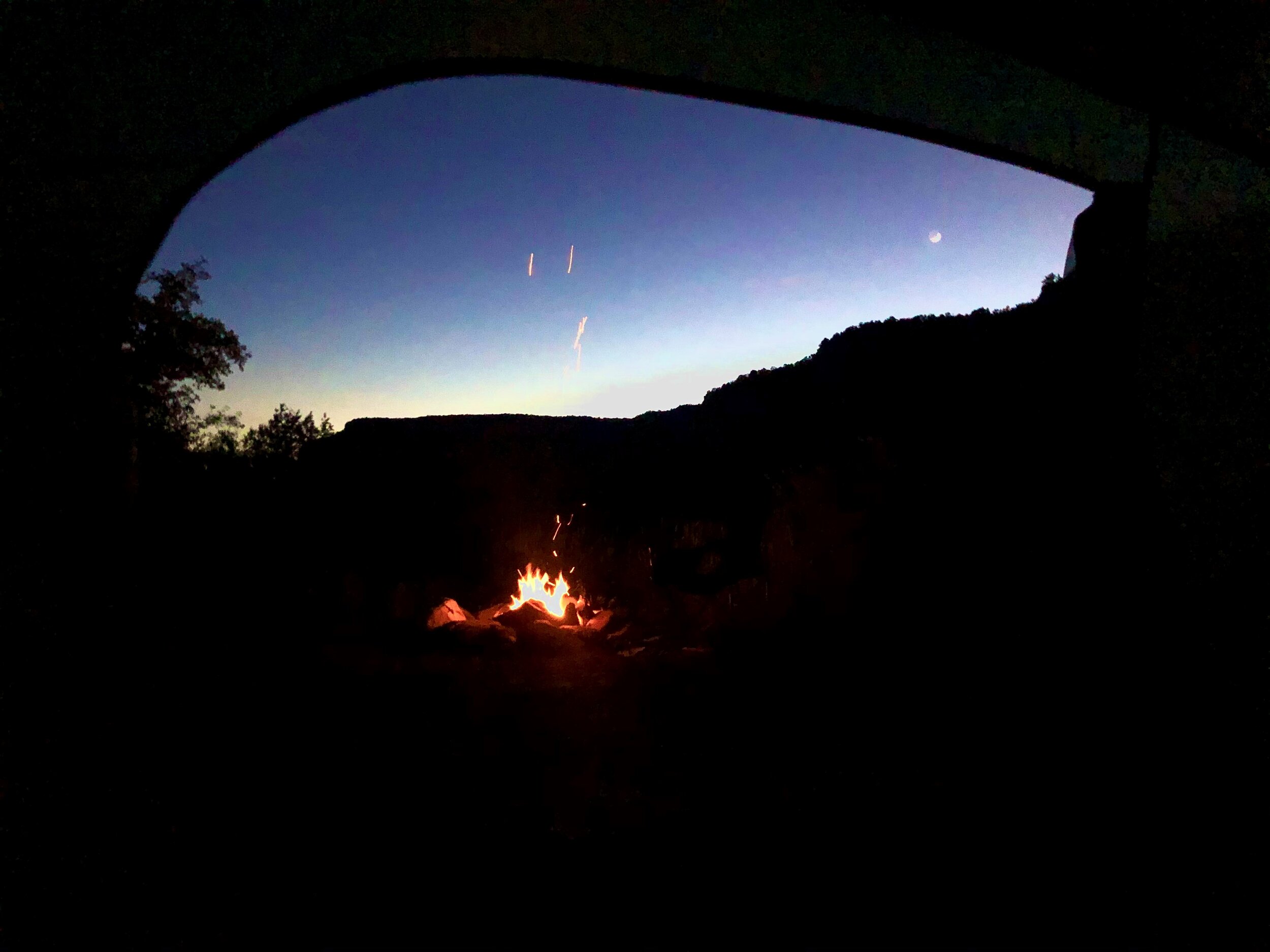Fire Safety
There is nothing I love more than sitting around a campfire with friends playing music, pulling out a bottle of Tuaca and just sitting back and staring up at the Milky Way in the dark night sky far away from all the city lights before the moon rises. However, nothing can ruin a trip faster than being that person who accidentally starts a forest fire - just saying.
So before I even start on some tips for fire safety, I cannot say this enough… If you are camping, NEVER leave your fire burning when you go to bed. I cannot tell you how many times I see this happen. Even without a flame, hot embers and ashes can easily ignite especially when winds pick up which often happens late at night. With just a little bit of oxygen, a fire will easily reignite. Think about how many times a fire in your fireplace was starting to go out and all you had to do to get it going again was blow on it. Do NOT go to bed until you know the fire is completely out - See the Drown, Stir & Feel Method below. I repeat, do NOT go to bed with a fire burning!
Okay, now that I am done with my rant, here are some tips.
[Note: This post may contain affiliate links.]
1. Know Before You Go
Know before you go or at least before you light that match. Always check local fire restrictions. In California, there are many times fires aren’t allowed.
You might find yellow caution tape across a campground fire pit and think what’s the big deal, I can just move it. Please don’t! It’s there for a reason.
2020 was the largest fire season in California’s modern history with almost 10,000 fires burning over 4.2 million acres! Even if you don’t care about the trees or man-made structures like grandma’s log cabin on the lake, picture Bambi. Nobody wants to see Bambi running terrified through a forest inferno being engulfed in flames… so be smart.
If they say no fires, it’s for a reason!
Tip: If fires aren’t allowed but it’s important to you, find out if portable propane pits or self-contained fire pits are permitted.
My favorite is Solo Stove Bon Fire.
2. Clear Flammable Vegetation
Clear all flammable vegetation at least 10 feet away from the fire pit. Make sure to remove leaves, grass, twigs and branches or anything else that may burn. Avoid building the fire near plants or under low hanging tree limbs. (I know, common sense, right?)
3. Use an Existing Fire Ring
Use an existing fire ring if possible. If you build your own, dig a depression in the dirt, clear it out and create a ring of rocks around it. Even a lot of primitive camping spots on BLM land will have pits like this already built for you so look around before choosing a spot.
If you are car camping in a remote area, you can also bring along a portable fire pit. My favorite is the Solo Stove Bon Fire mentioned above. These portable fire pits are seriously awesome. My husband is completely obsessed with ours and gave away 6 of them (yes, 6) as Christmas gifts this year to all the campers in our family. They have a range of sizes - one so small my son can actually fit it in his Harley saddle bags. And no, I don’t own stock in the company although, maybe I should!
4. Never Leave A Fire Unattended.
Never leave the fire unattended. There should always be an adult supervising (preferably a somewhat sober one, or at least one able to still stand).
5. Bring a Shovel & Bucket of Water
Always have a bucket of water and shovel nearby for an emergency. Some states require fire permits which mandate this.
In California, permits are required and it’s SO SIMPLE to get one that you can even do it on a cell phone. Simply go online, watch a short video, answer some easy questions and voila! You are now the proud owner of a fire permit.
(For California permits, click https://www.readyforwildfire.org/permits/campfire-permit/)
6. Drown, Stir & Feel
I cannot say it enough, always extinguish the fire completely before leaving the area or going to bed. Here’s the easy peasy Drown, Stir & Feel method:
Pour water on the fire.
Stir it around and make sure all ashes are wet. Turn wood and coals over to make sure all sides get wet. Move a little dirt from the sides over it.
Feel with your hand around the fire to make sure it’s not smoldering.





